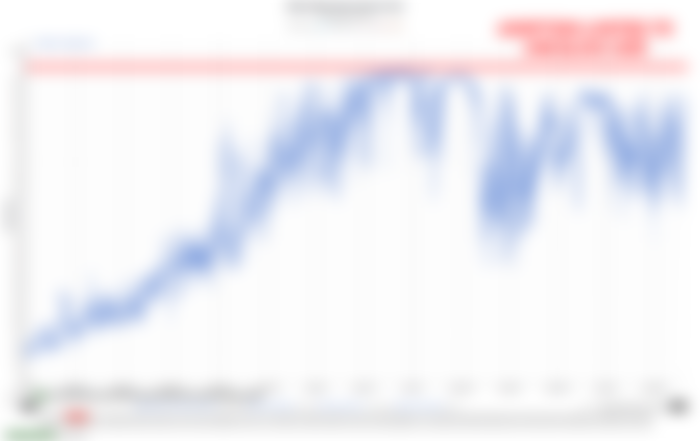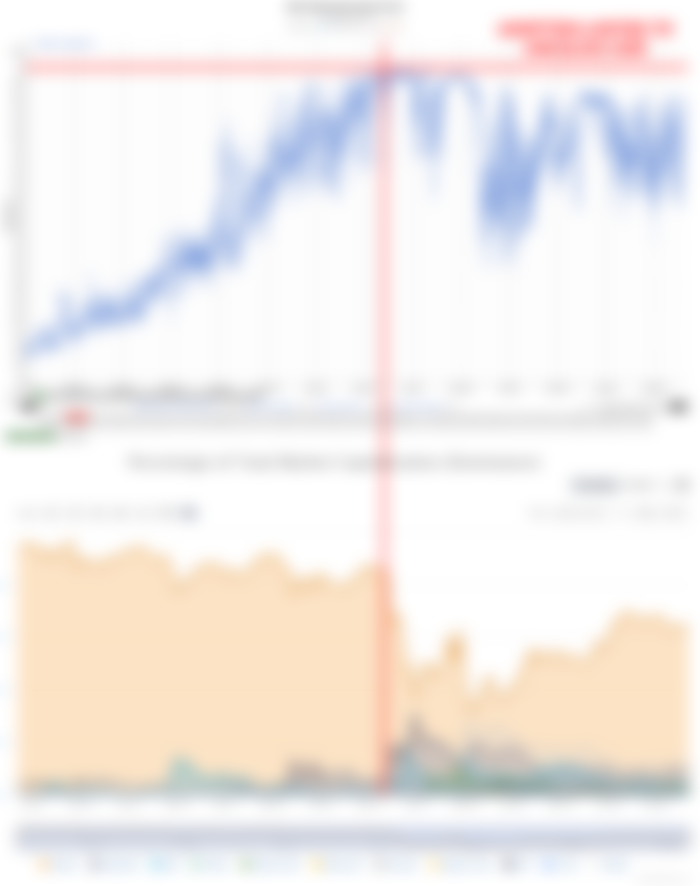Around the 12th of May the BTC version of Bitcoin will execute its 3rd halving where its block reward reduces from 12.5 to 6.25 BTC. The halving event occurs every 210,000 blocks and is designed to eventually shift the reward burden to the network’s transaction fees, which should be increasing due to increased Bitcoin adoption and economic activity. This time round the halving is expected to trigger a series of interlinked events that will affect both miners and the network as a whole, where crippling congestion and exorbitant individual transaction fees could spell doom for BTC and a resurgence in competing cryptocurrencies. Here at BitcoinBCH.com we’ve spoken to some of the largest miners on the planet, conducted extensive research into this subject and processed complex information into an easily understood format for our audience; so that you can best position yourselves to avoid the pending BTC disaster. Please subscribe to our channel, hit the like button and share this video; your support goes a long way.

BTC’s one megabyte block policy is the blunder that will ultimately lead to its demise, however there are a number of other factors that will contribute to this particular high fee and congestion event. The approaching BTC halving will mark the first time a halving has triggered a mass exodus of hashrate, in what could be the biggest hash rate crash in the history of Bitcoin.

It is suspected that over 50% of the total hashrate is being provided by outdated mining hardware, mostly the popular Antminer S9 from Bitmain. These miners are already operating with razor thin margins given that the mining difficulty has continued making new highs for an extended period.

The halving will finally make them unprofitable to the point of having to be permanently switched off. Right now at the current BTC price of $8,705, an S9 miner will be making $2.09 income per day. At an average electricity cost of 5 cents per kilowatt hour, you subtract $1.68 from your income which leaves you with $0.41 profit.

When the halving occurs the income will halve but the electricity cost will stay the same, which means the miner will cost you 64 cents a day to keep operating. None of these calculations take into account debts to purchase the units or any other overhead expenses in mining beyond the electricity costs, so the reality is it will cost more than 64 cents a day which is already unviable. Even newer generation hardware might be forced to temporarily switch off. From where it is now the BTC price would have to miraculously double after the halving for the outdated hardware to be profitable once more, which is unlikely. So when 50% of the total BTC hash rate suddenly switches off, it’s going to have an effect on the average time it takes to mine a block until the difficulty adjusts.
The Bitcoin mining difficulty is a value that ensures a Bitcoin block is mined every 10 minutes on average. Miners repeatedly compute hashes of variants of a data structure called a block header, until one is found whose value is lower than that of the difficulty.

When this happens it means the block has been successfully mined. Every 2016 blocks an algorithm looks at the time between the first and last block of the period to determine whether the difficulty should increase or decrease, based upon the estimated total hashrate of the Bitcoin network.

2016 blocks are equivalent to 2 weeks at 10 minutes per block, so if it takes longer than 2 weeks the difficulty value will decrease and if it takes less than 2 weeks the difficulty value will increase in order to maintain the target 10 minute block average.

The halving will occur at block 630,000, which happens to be right in the middle of a difficulty adjustment period. Should 50% of BTC’s hashrate drop off the network at the halving, there will still be roughly 1008 blocks that need to be mined at the current difficulty level before an adjustment lowers the difficulty to accomodate for the drop in hashrate. Even then, the difficulty change is limited in that it cannot go down more than 25% or go up more than 400% of what it was, so we might have to wait for two difficulty adjustments before the block time returns to the 10 minute target. With half the hashrate for the intended difficulty, blocks will be mined every 20 minutes on average, or put another way, BTC will be mining the equivalent of half sized blocks every 10 minutes - a disaster for fees and reliability.
The BTC network has been operating at capacity for the last 4 years and this was done by design. Bitcoin Core developers have imposed a 1 megabyte block policy to ensure BTC can process no more than 3.5 transactions per second, crippling its intended use as an electronic cash system for the world.

A byproduct of this congestion is what’s known as the fee market; where instead of including a transaction fee of a fraction of a cent, which used to be the norm, those who send transactions now compete in a fee bidding war. Transactions with higher fees attached to them will be prefrenced by miners for inclusion for the next block, while those sending lower amounts will be stuck in the mempool for days, weeks or months. It all depends on how bad the congestion is. The worst high fee and congestion event BTC has seen to date happened in 2017 during the last bull market, where at its peak BTC users were paying an average transaction fee of $55 USD and 270,000 transactions were stuck in the mempool.

From the peak it took over 2 and a half months before the congestion returned to a more manageable level, but that was still not ideal as multi dollar fees persisted.

Right now, as I shoot this video, there are over 80,000 unconfirmed transactions waiting to be mined in a block, the highest level in the last 12 months. If this continues leading into the halving we will very likely experience far worse congestion and fees than what was seen in 2017.

As history has shown, there is a direct correlation between periods of excessive congestion and a mass exodus from BTC into competing cryptocurrencies. BTC will be unusable, too expensive and too slow, thus most of its users will opt to convert their BTC into assets which do not suffer from such a poor user experience in order to move their wealth around or make payments. This results in BTC’s market dominance declining while that of competing cryptos explodes.

Given that most users of BTC today are price speculators trading on exchanges, it will be even easier for the vast majority of BTC users to exchange their BTC for other cryptocurrencies since their BTC is already on the exchange, thereby allowing them to withdraw their money without being charged hundreds or even thousands of dollars in fees. Those who store their BTC off exchanges won’t be so lucky, as they’ll either have to pay a hefty fee or strap in and wait an unknown number of months until hopefully they can transact with lower fees. It's highly likely a mass panic will ensue as BTC users scramble to deposit their coins to the exchange, adding their transactions to the rapidly growing mempool backlog.
One particular cryptocurrency stands to gain the most from the BTC fee explosion and that’s Bitcoin Cash; a version of Bitcoin which elected to increase the block size to facilitate growing economic activity on the Bitcoin network. Due to its desirable qualities as an electronic cash system, ability to create tokens, privacy features and more, Bitcoin Cash is the only cryptocurrency which has truly given BTC a run for its money.

During the last big congestion event, it reached a quarter of BTC’s value, something no other coin has managed to achieve. Its growing merchant adoption numbers have already surpassed that of the declining BTC adoption, due to its low fees and instant transactions which is in stark contrast to what BTC has become. With its advantage of on-chain scaling, Bitcoin Cash is capable of facilitating all the world’s transactions without buckling under load - it will absorb any users fleeing BTC without breaking a sweat. These are all factors which suggest Bitcoin Cash is the ideal replacement for the failing BTC version of Bitcoin and following the BTC halving event we may very well see another attempt flip BTC for the top spot.
Now that everything has been laid out, you have been warned. If you own BTC, now is the time to act and prepare yourself for the coming halving, ideally by offloading any BTC you may still have for the upgraded Bitcoin Cash. If you choose to continue holding BTC, it would be wise to complete any transactions you need to make over the next months now, else you will have to bear the risk of insanely high fees and congestion. But mark my words, if the BTC ship sinks after the halving you'll have missed the opportunity to take the Bitcoin Cash lifeboat.













It would be just great !